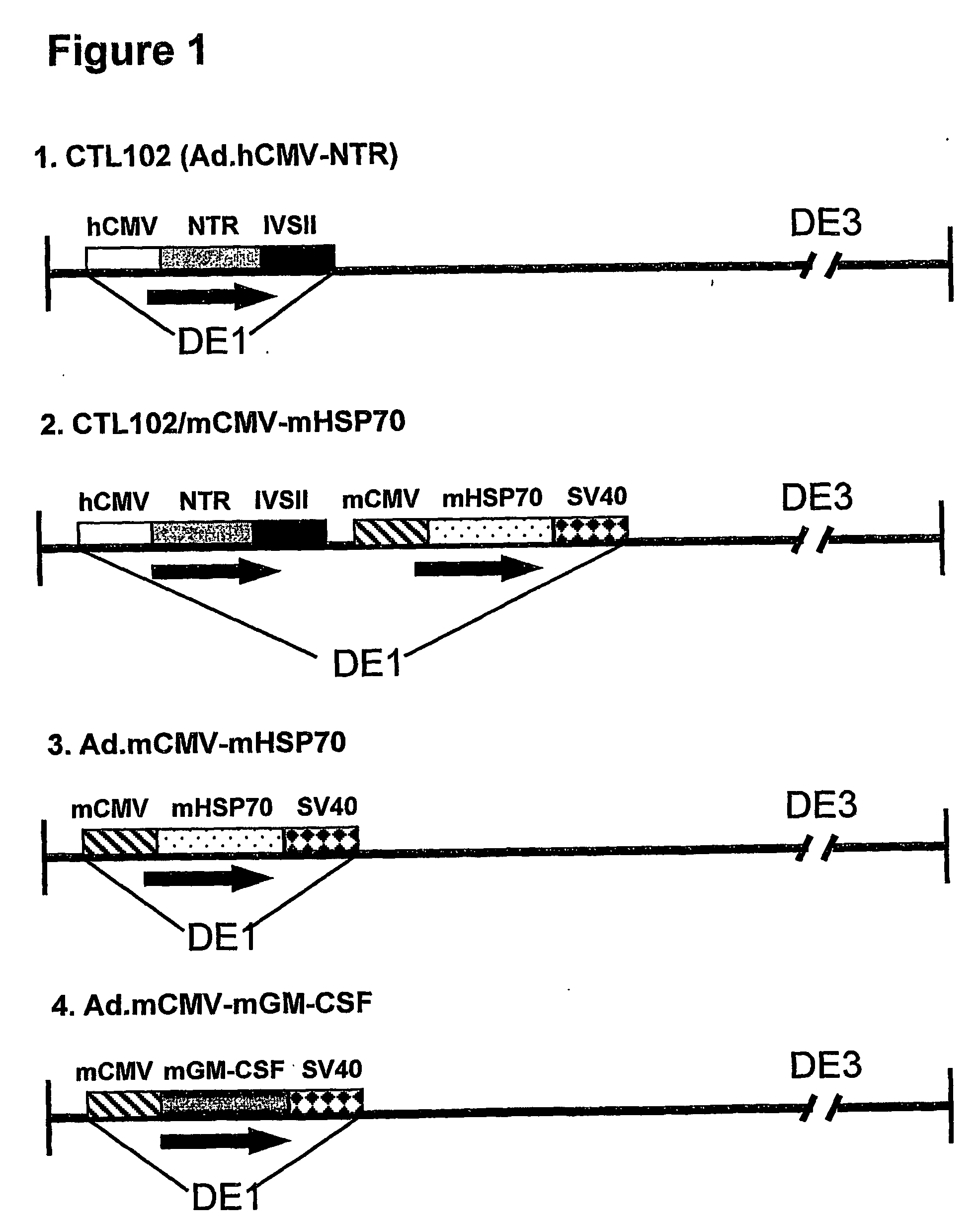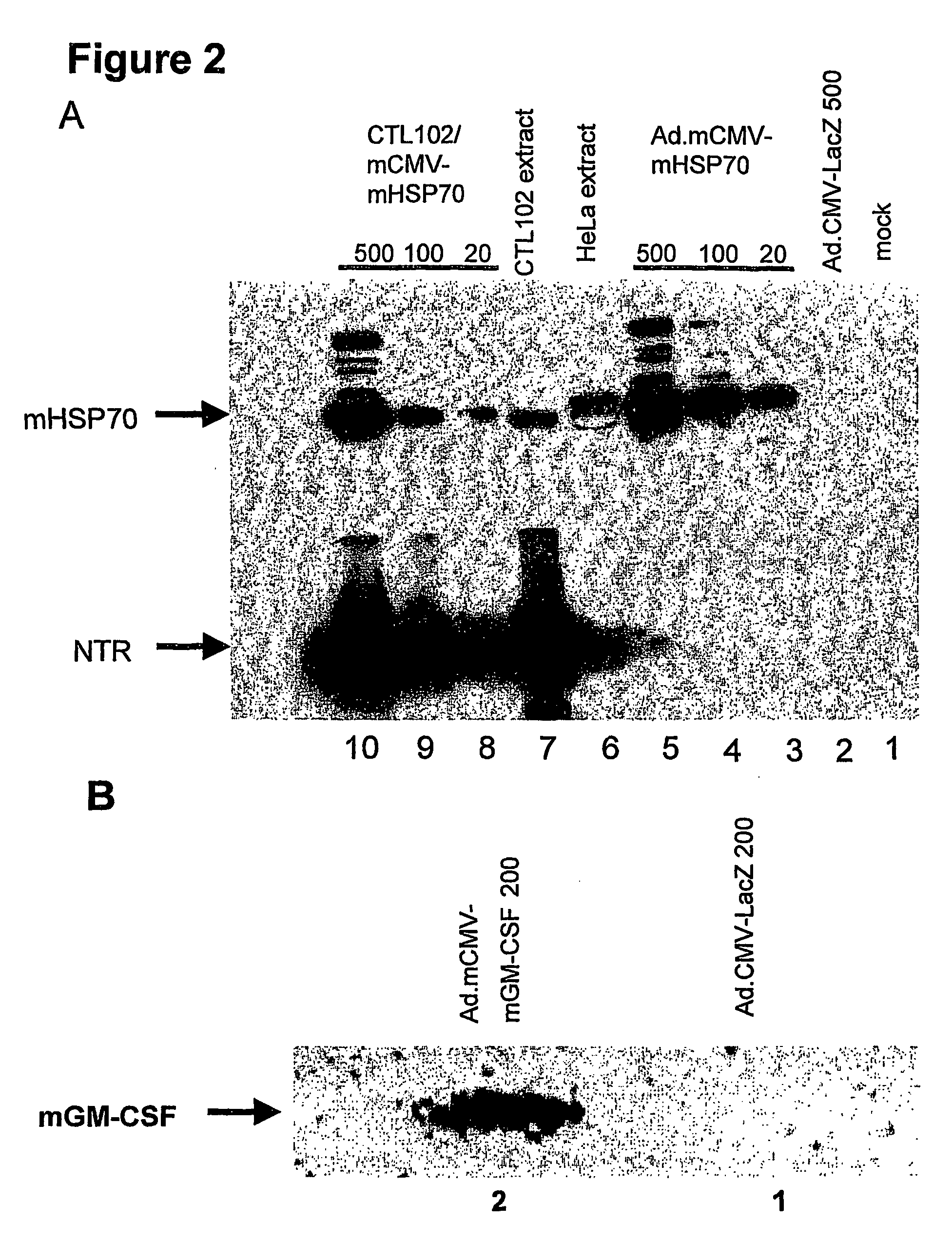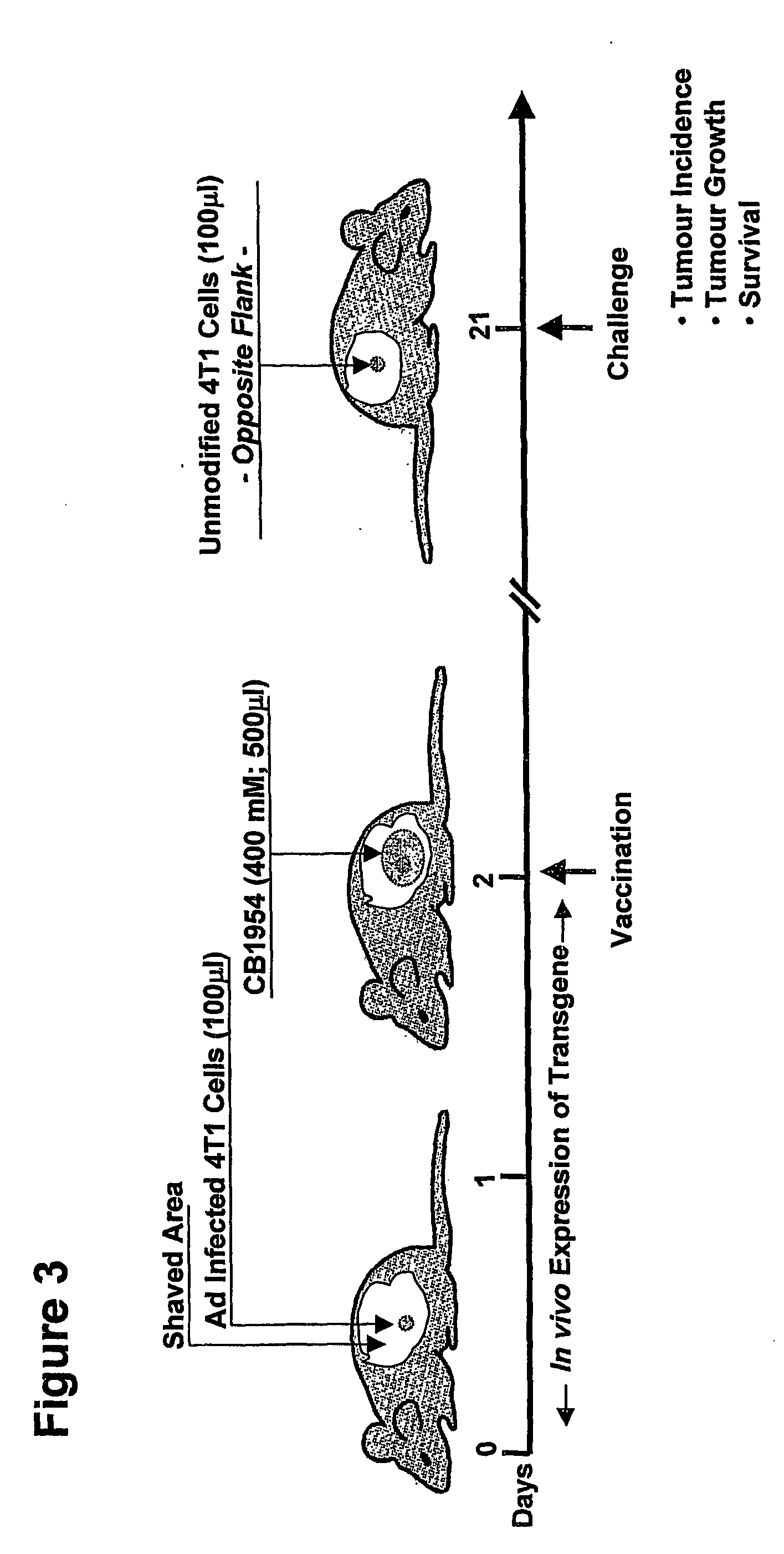Immunotherapy
- Summary
- Abstract
- Description
- Claims
- Application Information
AI Technical Summary
Benefits of technology
Problems solved by technology
Method used
Image
Examples
example 1
Example 1
Materials and Methods
Cell Culture
[0099] 4T1, a mouse breast cancer cells were obtained from ATCC(CRL-2539). EJ-6-2-Bam-6a was obtained from ATCC(CRL-1888) and was generated by transfecting NIH / 3T3 with DNA from the human EJ bladder carcinoma. PER.C6 cells (lit) were obtained from IntroGene (Leiden, The Netherlands). 911 cells were kindly provided by Prof. L. Young (CRC Institute for Cancer Studies, University of Birmingham, UK) and were maintained in DMEM containing 10% FCS, 10 mM MgCl2 and antibiotics. 4T1 and EJ-6-2-Bam-6a were cultured as recommended by the supplier.
Plasmid Construction
[0100] pTX0374 was constructed by cloning a 1.6 kb BglII-BamHI fragment containing the human CMV promoter fused to the E. coli ntr gene (NTR: E. coli B / r nitroreductase gene amplified from genomic DNA) into pSW107. pRAJ 43 BP4 is a pUC19 plasmid containing the mouse GM-CSF cDNA and was kindly provided by Prof. L. Young (CRC Institute for Cancer Studies, University of Birmingham, UK....
PUM
| Property | Measurement | Unit |
|---|---|---|
| Cell death | aaaaa | aaaaa |
| Therapeutic | aaaaa | aaaaa |
| Immunogenicity | aaaaa | aaaaa |
Abstract
Description
Claims
Application Information
 Login to View More
Login to View More - R&D
- Intellectual Property
- Life Sciences
- Materials
- Tech Scout
- Unparalleled Data Quality
- Higher Quality Content
- 60% Fewer Hallucinations
Browse by: Latest US Patents, China's latest patents, Technical Efficacy Thesaurus, Application Domain, Technology Topic, Popular Technical Reports.
© 2025 PatSnap. All rights reserved.Legal|Privacy policy|Modern Slavery Act Transparency Statement|Sitemap|About US| Contact US: help@patsnap.com



